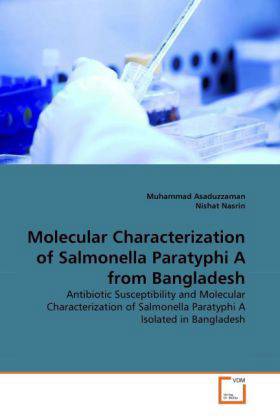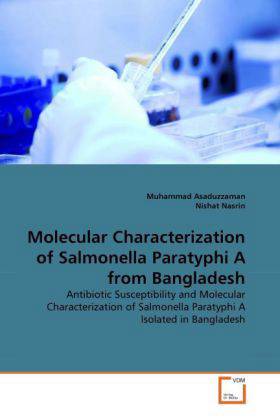
Je cadeautjes zeker op tijd in huis hebben voor de feestdagen? Kom langs in onze winkels en vind het perfecte geschenk!
- Afhalen na 1 uur in een winkel met voorraad
- Gratis thuislevering in België vanaf € 30
- Ruim aanbod met 7 miljoen producten
Je cadeautjes zeker op tijd in huis hebben voor de feestdagen? Kom langs in onze winkels en vind het perfecte geschenk!
- Afhalen na 1 uur in een winkel met voorraad
- Gratis thuislevering in België vanaf € 30
- Ruim aanbod met 7 miljoen producten
Zoeken
Molecular Characterization of Salmonella Paratyphi A from Bangladesh
Antibiotic Susceptibility and Molecular Characterization of Salmonella Paratyphi A Isolated in Bangladesh
Muhammad Asaduzzaman, Nishat Nasrin
Paperback | Engels
€ 61,95
+ 123 punten
Omschrijving
Strains of Salmonella Paratyphi A isolated from the patients admitted to the diarrhoea treatment center of ICDDR, B were characterized both at the phenotypic and genotypic levels. Antibiotic susceptibility test revealed that 61% of the strains (n = 19) were sensitive to all the antibiotics used for empirical treatment of paratyphoid fever and 32% strains (n = 10) were resistant only to nalidixic acid. Most of the strains that showed reduced susceptibility to ciprofloxacin, having elevated MIC value (0.5µg/ml). A point mutation in the gyrA gene was observed at codon 83 (TCC to TTC), which substitutes phenylalanine for. This clearly indicates that a significant number of the S. Paratyphi A strains with reduced susceptibility to ciprofloxacin has been evolved. Of 31 strains, 16 (52%) of S. Paratyphi A strains harbored 35 MDa middle-ranged and non-conjugative plasmid. Pulse-field gel electrophoresis (PFGE) revealed that most of the strains (83%) were clonal regardless of antimicrobial sensitivity patterns.
Specificaties
Betrokkenen
- Auteur(s):
- Uitgeverij:
Inhoud
- Aantal bladzijden:
- 120
- Taal:
- Engels
Eigenschappen
- Productcode (EAN):
- 9783639288582
- Verschijningsdatum:
- 29/08/2010
- Uitvoering:
- Paperback
- Afmetingen:
- 152 mm x 229 mm
- Gewicht:
- 186 g

Alleen bij Standaard Boekhandel
+ 123 punten op je klantenkaart van Standaard Boekhandel
Beoordelingen
We publiceren alleen reviews die voldoen aan de voorwaarden voor reviews. Bekijk onze voorwaarden voor reviews.









